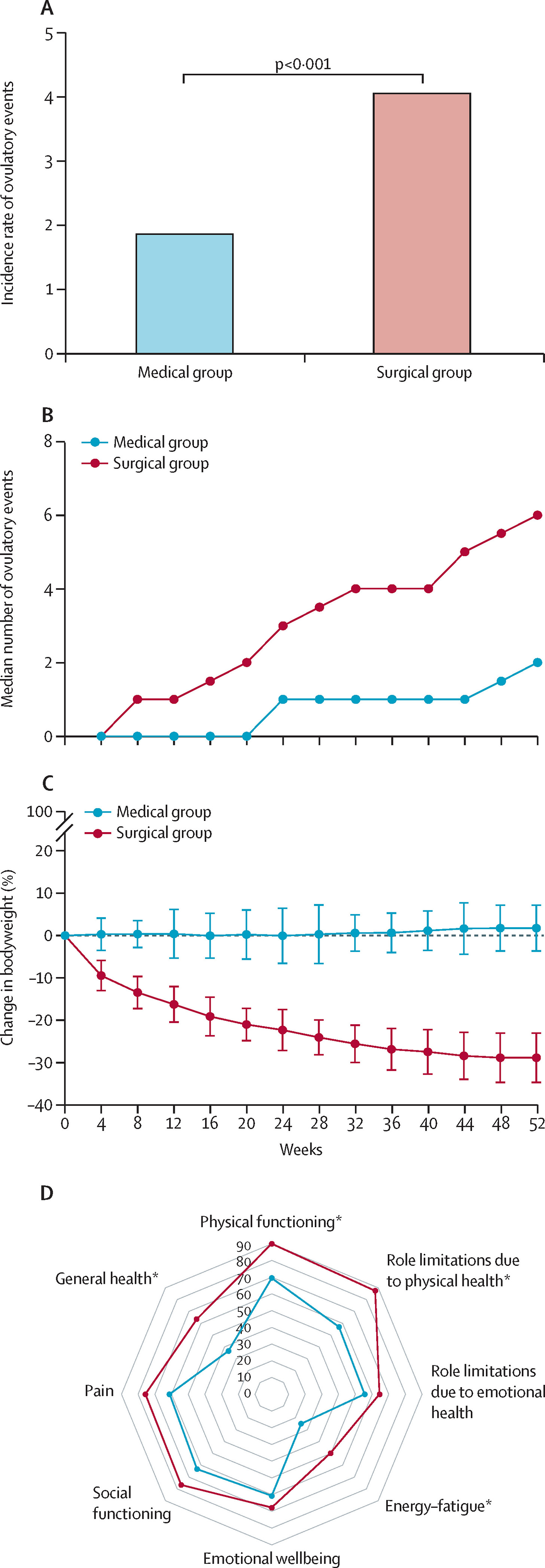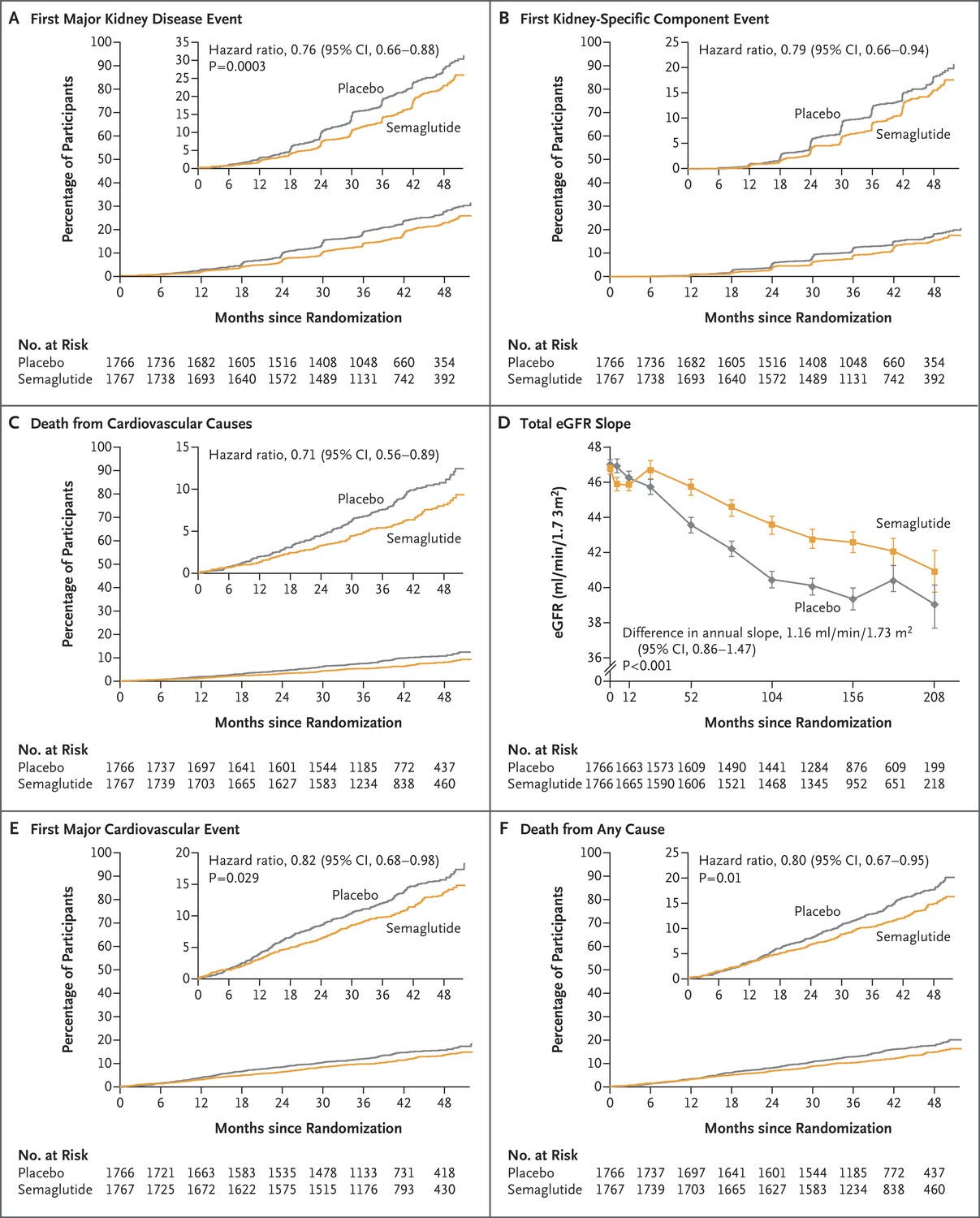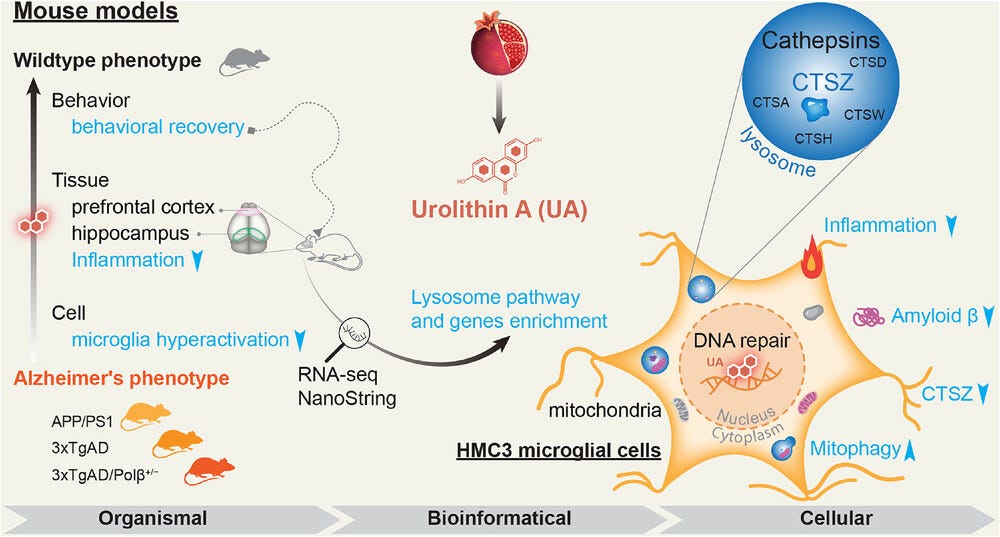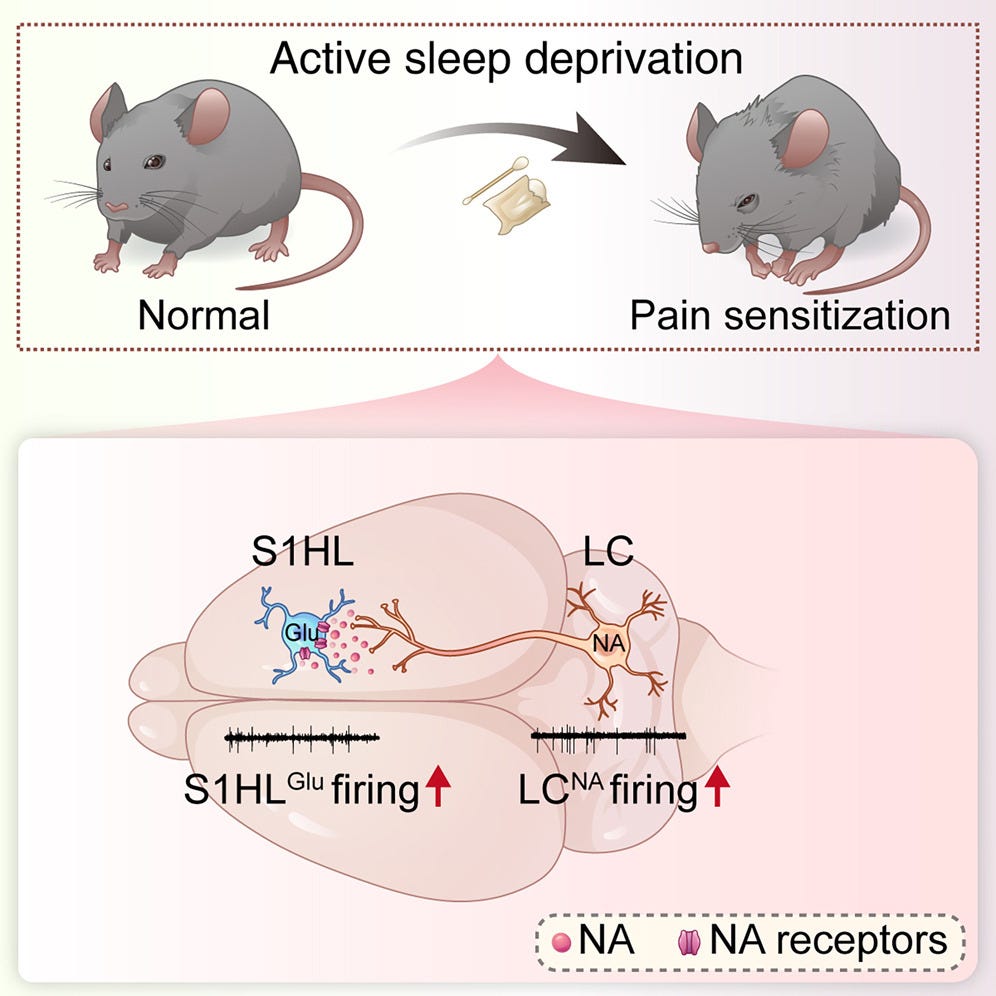HealthByte 006
This week: Bariatric surgery for polycystic ovary syndrome, semaglutide for kidney disease, and bird diversity for mental health.
Welcome to HealthByte, your curated source for the latest breakthroughs in health and life sciences!
Bytes of Research
1. Bariatric surgery for spontaneous ovulation in women living with polycystic ovary syndrome: the BAMBINI multicentre, open-label, randomised controlled trial
(The Lancet)
TL;DR: The BAMBINI trial found that in women with PCOS and obesity, bariatric surgery (vertical sleeve gastrectomy) resulted in 2.5 times more spontaneous ovulations and significant improvements in weight, heart health, and quality of life compared to traditional medical care, despite more short-term side effects.
Polycystic ovary syndrome (PCOS) is a common hormonal disorder in women, often causing infertility due to irregular ovulation. Obesity can exacerbate PCOS symptoms, making weight management crucial but challenging. While lifestyle changes and medications offer limited success, recent observations suggested bariatric surgery might boost ovulation and fertility.
The BAMBINI trial compared bariatric surgery (in this case, vertical sleeve gastrectomy) with traditional medical care in 80 women with PCOS and obesity. Participants were randomly assigned to either undergo surgery or receive medical therapy, and their ovulation rates were monitored for a year.
The trial revealed that women who had bariatric surgery had 2.5 times more spontaneous ovulations than those receiving medical care (incidence rate ratio 2·5 [95% CI 1·5–4·2], p<0·0007). Additionally, the surgery group saw more significant improvements in weight, heart health, and overall quality of life, despite experiencing more short-term side effects. These findings suggest that bariatric surgery could be a highly effective treatment for improving ovulation and fertility in women with PCOS and obesity.

2. Effects of Semaglutide on Chronic Kidney Disease in Patients with Type 2 Diabetes
(New England Journal of Medicine)
TL;DR: In a double-blinded, randomized controlled trial involving 3533 adults, researchers investigated adults with type 2 diabetes at high-risk of chronic kidney disease. Their findings showed that semaglutide significantly reduced the risk of major kidney faliure, the risk of major cardiovascular events and general mortality.
In a double-blind, randomized controlled trial involving 3533 adults, researchers investigated adults with type 2 diabetes at high-risk of chronic kidney disease. The adults were deemed eligible for the study if they had a glycated hemoglobin level of ≤10%, were at high risk of chronic kidney failure and were receiving a stable maximal labeled dose of renin–angiotensin system (RAS) inhibitors.
Then, the authors randomised the treatment of either semaglutide or a placebo in a 1:1 ratio. The study used an 8-week dose-escalation regimen, beginning with 0.25 mg of semaglutide per week for the first 4 weeks, increasing to 0.5 mg per week for the next 4 weeks, and then maintaining a dose of 1.0 mg per week for the remainder of the treatment period, provided there were no unacceptable side effects. The primary outcome of interest was major kidney failure.
The findings showed that semaglutide significantly reduced the risk of major kidney faliure by 24%. Looking at the secondary outcomes, the study found that semaglutide also reduced the risk of major cardiovascular events and general mortality.

3. Urolithin A improves Alzheimer's disease cognition and restores mitophagy and lysosomal functions
(Alzheimer's & Dementia)
TL;DR: Researchers found that urolithin A, a gut metabolite whose precursor is naturally found in fruits such as pomegrantes and berries, could improve learning, memory, and pathophysiological symptoms of Alzheimer's disease in mice.
Alzheimer's disease (AD) is a disease that is predicted to have tripled in cases by 2050 worldwide. In a new study published in Alzheimer's & Dementia, Hou et al. investigate the effects of long-term treatment with urolithin A (UA) in mice. Urolithin A is a gut microbial metabolite of ellagic acid, a polyphenol naturally found in fruits and vegetables including pomegranate, berries and nuts.
To evaluate its effect, the authors relied on several behavioral, physiological, and genetic tests on mouse models of AD. In particular, they found long-term UA treatment improved learning and memory according to the behavioral tests (notably, tests for novel object recognition and spatial memory); biochemical assays also revealed decreased levels of amyloid beta accumulation and tau protein phosphorylation, which are traditional hallmarks of AD.
Lastly, the authors showed that UA-induced mitophagy (removal of damaged mitochondria) by stimulating the expression of Cathepsin Z, which contributes to the function of lysosomes, the organelle that is primarily responsible for mitophagy.

4. Positive relationship between bird diversity and human mental health: an analysis of repeated cross-sectional data
(The Lancet Planetary Health)
TL;DR: A recent study in The Lancet Planetary Health reveals that higher bird diversity, based on citizen science data, is associated with improved mental health, particularly in lower income groups.
In the latest issue of The Lancet Planetary Health, German environmental scientist Joel Methorst explores the link between bird diversity and human mental health using extensive citizen science data. The study analyzed data from over 125,000 individuals, using bird sighting records collected by volunteers in gardens, from balconies, and in parks. Bird diversity was assessed by filtering out species observed fewer than 20 times and applying additional data adjustments. This yielded a robust dataset comprising more than 6 million bird sighting records.
Mental health data were derived from questionnaires that included the sumPHQ score, which measures depression symptoms (lower scores indicating less depression), and the Mental Component Summary (MCS) score, reflecting overall mental health (higher scores indicating better mental health). Methorst's findings indicate that higher bird diversity correlates with lower sumPHQ scores and higher MCS scores, suggesting that exposure to diverse bird species may enhance mental health. Notably, the effect was more pronounced in lower income groups.
However, there are several limitations to the study, including the potential of bird reporting rates serving as a proxy for specific nature characteristics rather than true bird diversity, and a lower response rate of 9-32% for the mental health questionnaires, which may introduce selection bias.
5. A noradrenergic pathway for the induction of pain by sleep loss
(Current Biology)
TL;DR: A recent study found that active sleep deprivation (ASD) from recreational activities leads to pain sensitization by stimulating noradrenergic inputs from the locus coeruleus (LCNA) to glutamatergic neurons in the hindlimb primary somatosensory cortex (S1HLGlu), and inhibiting this pathway can reduce pain sensitization.
Sleep loss is a widespread issue in modern society, leading to various health problems, including increased pain sensitivity. While previous research has mainly focused on sleep deprivation due to stress or illness, the impact of active sleep deprivation (ASD) from recreational activities has been less understood.
A recent study identified a neural circuit involved in pain sensitization in mice; they found that ASD stimulates noradrenergic inputs from the locus coeruleus (LCNA) to glutamatergic neurons in the hindlimb primary somatosensory cortex (S1HLGlu). Additionally, inhibiting this LCNA→S1HLGlu pathway reduced pain sensitization, while activating it reproduced the pain caused by ASD. These findings highlight the importance of the LCNA→S1HLGlu pathway in ASD-induced pain sensitization, enhancing our understanding of pain processing mechanisms.
The study showed that S1HLGlu neurons receive direct inputs from LCNA neurons, indicating that increased activity in this pathway mediates pain sensitization during prolonged wakefulness. Understanding the role of the LC in modulating S1 neuronal activity offers new insights into the neural mechanisms underlying pain sensitization from ASD, suggesting potential therapeutic targets for managing pain associated with sleep deprivation.

Non-Article Research Items
How the war on drunk driving was won: Deterrence alone might not stop crime. But, as the campaign against drunk driving shows, it could help create the norms that do. (Works in Progress)
How to survive in science, part I: Let's first define the problems you face, of which there are many. (The Fictional Aether)
‘Natty or not?’: how steroids got big: Once upon a time, it was only hardcore bodybuilders who pumped themselves up with testosterone. Today it is no longer niche. But how dangerous is it? (The Guardian)

